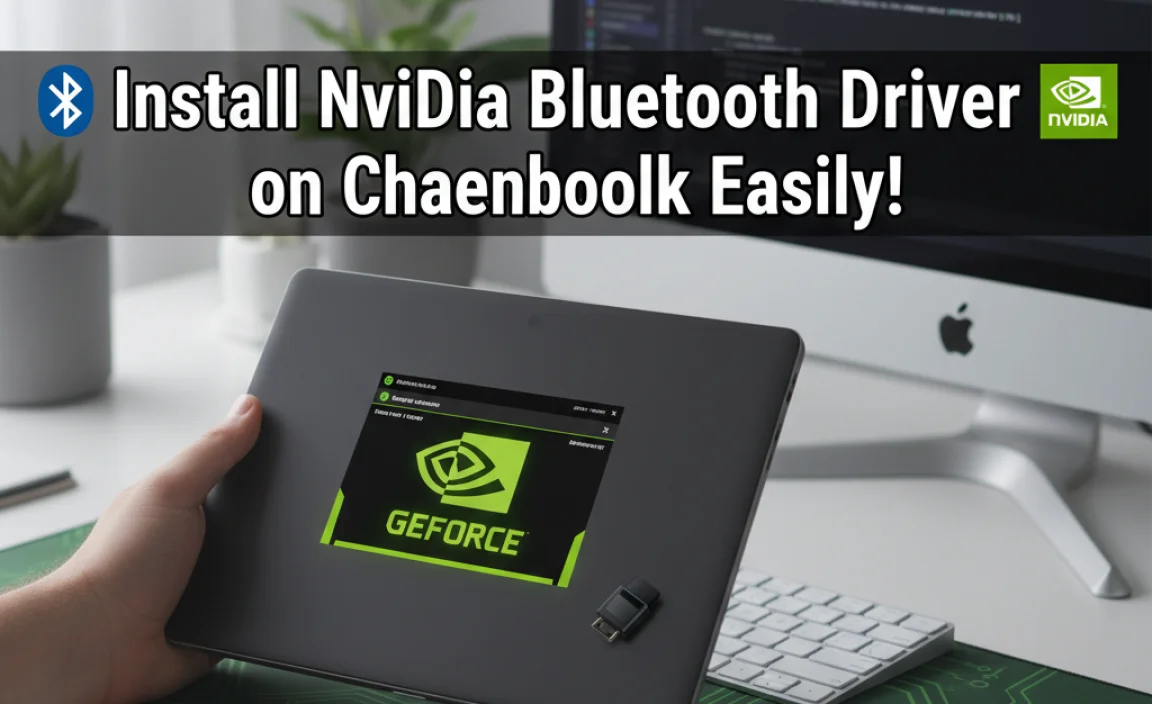<h1>How Do I Update My Drivers for Windows 10: An Essential Guide</h1>
<p><strong>Quick Summary:</strong> To update your Windows 10 drivers, use Windows Update for automatic checks, Device Manager for manual updates, or manufacturer websites for the latest versions. Keeping drivers current ensures your PC runs smoothly and securely, preventing common performance issues. This guide shows you how, step-by-step.</p>
<p>Are you experiencing strange glitches, slow performance, or hardware that suddenly stops working on your Windows 10 computer? It can be incredibly frustrating when your PC acts up, and often, the culprit isn’t a major system failure, but something much simpler: outdated or corrupted drivers. Drivers are like tiny instruction manuals that tell Windows how to talk to your hardware – your graphics card, your printer, your sound card, and more. When these instructions are old or wrong, your hardware can’t perform as it should. But don’t worry, you don’t need to be a tech whiz to fix this! In this guide, we’ll walk you through exactly how to update your drivers for Windows 10, making your computer run like new again. We’ll break it down into easy steps so you can tackle this common problem with confidence.</p>
<h2>Why Driver Updates Matter for Your Windows 10 PC</h2>
<p>Think of drivers as the translators between your operating system (Windows 10) and the physical parts of your computer (hardware). Without the right translators, communication breaks down, leading to all sorts of problems. Keeping your drivers up-to-date is crucial for several reasons:</p>
<ul>
<li><strong>Improved Performance:</strong> Newer drivers often include optimizations that can make your hardware run faster and more efficiently. This is especially true for graphics cards, leading to smoother gaming and video playback.</li>
<li><strong>Bug Fixes and Stability:</strong> Manufacturers constantly release driver updates to fix bugs and address issues that cause crashes, freezes, or errors. Updating can resolve problems you might be having right now.</li>
<li><strong>New Features and Compatibility:</strong> Sometimes, driver updates enable new features for your hardware or ensure compatibility with the latest Windows updates and new software.</li>
<li><strong>Security Enhancements:</strong> Like any software, drivers can have security vulnerabilities. Updates often patch these security holes, protecting your system from potential threats.</li>
<li><strong>Hardware Functionality:</strong> If a piece of hardware isn’t working at all, a driver issue is often the first thing to check. A proper driver ensures your device is recognized and functions correctly.</li>
</ul>
<p>Ignoring driver updates is like never cleaning your car – eventually, things start to sputter and fail. But the good news is, updating drivers is usually a straightforward process.</p>
<h2>Common Driver Issues and How to Spot Them</h2>
<p>How do you know if your drivers are the problem? Here are some common signs and error messages you might encounter:</p>
<ul>
<li><strong>”Device Not Recognized” or Error Codes:</strong> When Windows can’t identify or properly communicate with a piece of hardware.</li>
<li><strong>Blue Screen of Death (BSOD):</strong> While BSODs can have many causes, faulty drivers are a frequent culprit.</li>
<li><strong>Poor Performance:</strong> Slowdowns, choppy video, laggy games, or distorted audio can all point to graphics, sound, or network driver issues.</li>
<li><strong>Hardware Malfunctions:</strong> A printer not printing, a webcam not showing video, or Wi-Fi not connecting are classic signs of driver problems.</li>
<li><strong>”Driver Not Found” or “Driver Error” Messages:</strong> These are direct indications that a driver is missing or not functioning correctly.</li>
</ul>
<h2>Three Main Ways to Update Your Drivers in Windows 10</h2>
<p>There are a few reliable ways to keep your Windows 10 drivers updated. We’ll go through each one, explaining when and why you might use it. It’s a good idea to know all of them so you can choose the best method for your situation.</p>
<h3>Method 1: Using Windows Update (The Easiest Way)</h3>
<p>Windows Update isn’t just for Windows updates; it also does a good job of finding and installing many essential drivers automatically. This is usually the first and easiest step for most users.</p>
<h4>Steps to Update Drivers via Windows Update:</h4>
<ol>
<li>Click the <strong>Start menu</strong> (the Windows icon in the bottom-left corner).</li>
<li>Click on the <strong>Settings gear icon</strong> to open Windows Settings.</li>
<li>In the Settings window, click on <strong>Update & Security</strong>.</li>
<li>On the left-hand side, select <strong>Windows Update</strong>.</li>
<li>Click the <strong>Check for updates</strong> button. Windows will scan for available updates, including optional driver updates.</li>
<li>If driver updates are found, they might appear under “Optional updates” or be downloaded and installed automatically. If they are optional, you’ll usually see a link to <strong>View optional updates</strong>. Click this.</li>
<li>Expand the <strong>Driver updates</strong> section and select the drivers you wish to install. Then, click <strong>Download and install</strong>.</li>
<li>Windows will download and install the selected drivers. You may need to <strong>restart your computer</strong> for the changes to take effect.</li>
</ol>
<p>Windows Update is great because it’s generally safe and validated by Microsoft. However, it doesn’t always offer the very latest drivers, especially for performance-critical hardware like graphics cards. For those, you might need other methods.</p>
<h3>Method 2: Using Device Manager (For Specific Hardware)</h3>
<p>Device Manager is a powerful built-in tool in Windows that allows you to view and control all the hardware connected to your computer. You can use it to update, enable, disable, or uninstall devices and their drivers.</p>
<h4>Steps to Update Drivers via Device Manager:</h4>
<ol>
<li>Right-click the <strong>Start button</strong> (Windows icon) and select <strong>Device Manager</strong> from the menu.</li>
<li>The Device Manager window will open, listing all your hardware categories (e.g., “Display adapters,” “Keyboards,” “Sound, video and game controllers”).</li>
<li>Expand the category that contains the hardware you want to update the driver for. For example, if you’re having trouble with your graphics, expand <strong>Display adapters</strong>.</li>
<li>Right-click on the specific hardware device (e.g., “NVIDIA GeForce RTX 3070”).</li>
<li>Select <strong>Update driver</strong> from the context menu.</li>
<li>You’ll see two options:
<ul>
<li><strong>Search automatically for drivers:</strong> Windows will search your computer and the internet for the best available driver. This is similar to Windows Update but more targeted.</li>
<li><strong>Browse my computer for drivers:</strong> Use this if you’ve already downloaded a driver file from the manufacturer’s website.</li>
</ul>
</li>
<li>If you choose “Search automatically,” Windows will try to find a new driver. If it finds one, follow the on-screen prompts to install it. If it says “The best drivers for your device are already installed,” then Windows doesn’t have a newer driver to offer through this method.</li>
<li>If you manually downloaded a driver file (usually a .exe or .zip that you’ve extracted), choose “Browse my computer for drivers” and navigate to the folder where you saved the driver files. Then, follow the prompts.</li>
<li>After installation, you may be prompted to restart your computer.</li>
</ol>
<p>Device Manager is excellent for troubleshooting specific devices or when you know a particular piece of hardware is acting up. If Windows Update didn’t find a driver, or if you suspect a specific device is the problem, Device Manager is your next stop.</p>
<h3>Method 3: Downloading Drivers Directly from the Manufacturer (For Latest & Best Performance)</h3>
<p>For crucial components like graphics cards, chipsets, or network adapters, manufacturers often release drivers directly on their websites that are newer and more optimized than what Windows Update might offer. This is often the best route for gamers, content creators, or anyone who wants the absolute best performance and latest features.</p>
<h4>Steps to Download and Install Manufacturer Drivers:</h4>
<ol>
<li><strong>Identify Your Hardware:</strong> You need to know the exact model of the hardware for which you need a driver.
<ul>
<li>Use Device Manager (as described in Method 2) to find the device name and manufacturer.</li>
<li>For graphics cards, you can often find this by right-clicking your desktop and selecting your graphics card’s control panel (e.g., NVIDIA Control Panel, AMD Radeon Software).</li>
</ul>
</li>
<li><strong>Visit the Manufacturer’s Website:</strong> Go to the official website of the hardware manufacturer (e.g., NVIDIA, AMD, Intel, Realtek, HP, Dell, Logitech).</li>
<li><strong>Find the Support/Downloads Section:</strong> Look for a “Support,” “Downloads,” or “Drivers” section on their website.</li>
<li><strong>Enter Your Product Information:</strong> You’ll typically be asked to enter your product model, serial number, or select your product from a list. You’ll also need to specify your operating system (Windows 10, 64-bit).</li>
<li><strong>Download the Latest Driver:</strong> Browse the available drivers and download the latest stable version for your specific hardware and operating system. Drivers usually come as executable (.exe) files.</li>
<li><strong>Run the Installer:</strong> Locate the downloaded .exe file (usually in your Downloads folder) and double-click it to run the installer.</li>
<li><strong>Follow On-Screen Instructions:</strong> The installer will guide you through the process. It might ask you to agree to terms, choose installation options (like a “clean install” which is often recommended for graphics drivers to remove old settings), and will then install the new driver.</li>
<li><strong>Restart Your Computer:</strong> A restart is almost always required after installing drivers from the manufacturer.</li>
</ol>
<p>When downloading directly from manufacturers, always stick to the official websites. Download sites that offer drivers can sometimes bundle unwanted software or even malware. It’s worth the small extra effort to go directly to the source for safety and reliability.</p>
<h2>What About Driver Update Software?</h2>
<p>You’ll likely see advertisements for third-party driver update programs. While some can be helpful, many are unnecessary, overly aggressive with notifications, or even potentially harmful. Microsoft, for instance, recommends against using such software for driver updates.</p>
<p>Generally, if your hardware is functioning well, you don’t need daily driver updates. The three methods described above (Windows Update, Device Manager, and Manufacturer Websites) are the safest and most reliable ways to manage your drivers. If you choose to use third-party software, be extremely cautious, stick to reputable names, and always scan downloaded files with your antivirus first.</p>
<h2>A Quick Look at Driver Update Methods</h2>
<p>Here’s a simple comparison to help you decide which method to use:</p>
<table border=”1″ cellpadding=”5″ cellspacing=”0″>
<thead>
<tr>
<th>Method</th>
<th>Pros</th>
<th>Cons</th>
<th>Best For</th>
</tr>
</thead>
<tbody>
<tr>
<td>Windows Update</td>
<td>Easiest, automatic, generally safe.</td>
<td>May not always provide the latest drivers.</td>
<td>General system stability, basic hardware.</td>
</tr>
<tr>
<td>Device Manager</td>
<td>Targeted, built-in, good for troubleshooting specific devices.</td>
<td>Relies on Windows’ driver catalog or manual installation.</td>
<td>Updating specific hardware, fixing device errors.</td>
</tr>
<tr>
<td>Manufacturer Website</td>
<td>Latest drivers, best performance, new features, direct support.</td>
<td>Requires manual steps, need to know exact hardware.</td>



